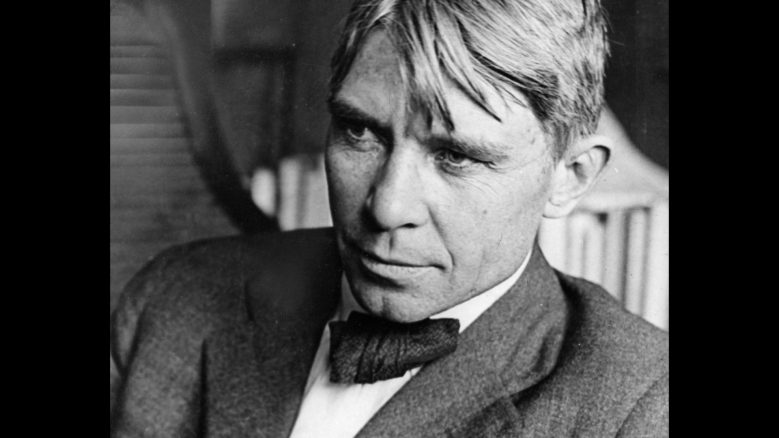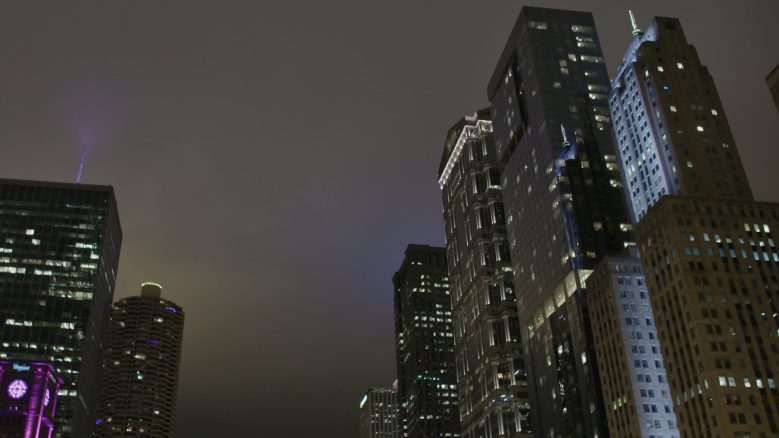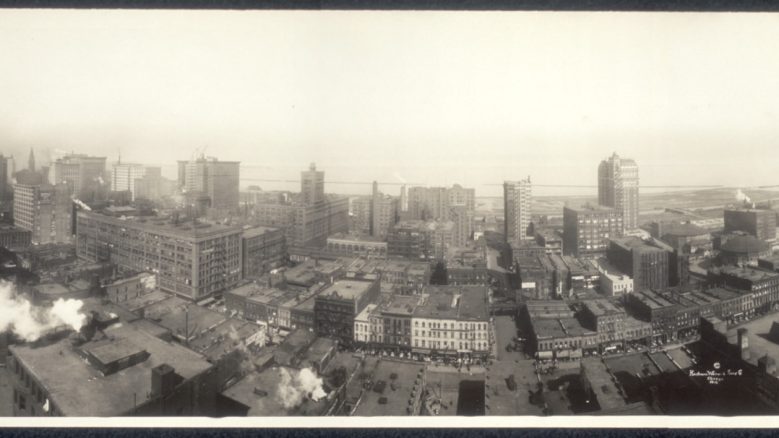Architect Frank Gehry, real estate developer Zhang Xin, poet Robert Polito, and student poets from across the U.S. consider the parallel emergence of architectural and poetic modernism, through Sandburg’s avant-garde ode to skyscrapers.
Interested in learning more? Poetry in America offers a wide range of courses, all dedicated to bringing poetry into classrooms and living rooms around the world.
by Carl Sandburg
By day the skyscraper looms in the smoke and sun and has a soul.
Prairie and valley, streets of the city, pour people into it and they mingle
among its twenty floors and are poured out again back to the streets,
prairies and valleys.
It is the men and women, boys and girls so poured in and out all day that give
the building a soul of dreams and thoughts and memories.
(Dumped in the sea or fixed in a desert, who would care for the building or
speak its name or ask a policeman the way to it?)
Elevators slide on their cables and tubes catch letters and parcels and iron
pipes carry gas and water in and sewage out.
Wires climb with secrets, carry light and carry words, and tell terrors and
profits and loves–curses of men grappling plans of business and
questions of women in plots of love.
Hour by hour the caissons reach down to the rock of the earth and hold the
building to a turning planet.
Hour by hour the girders play as ribs and reach out and hold together the
stone walls and floors.
Hour by hour the hand of the mason and the stuff of the mortar clinch the
pieces and parts to the shape an architect voted.
Hour by hour the sun and the rain, the air and the rust, and the press of time
running into centuries, play on the building inside and out and use it.
Men who sunk the pilings and mixed the mortar are laid in graves where the
wind whistles a wild song without words
And so are men who strung the wires and fixed the pipes and tubes and those
who saw it rise floor by floor.
Souls of them all are here, even the hod carrier begging at back doors
hundreds of miles away and the brick-layer who went to state’s prison
for shooting another man while drunk.
(One man fell from a girder and broke his neck at the end of a straight
plunge–he is here–his soul has gone into the stones of the building.)
On the office doors from tier to tier–hundreds of names and each name
standing for a face written across with a dead child, a passionate lover,
a driving ambition for a million dollar business or a lobster’s ease of life.
Behind the signs on the doors they work and the walls tell nothing from room
to room.
Ten-dollar-a-week stenographers take letters from corporation officers,
lawyers, efficiency engineers, and tons of letters go bundled from the
building to all ends of the earth.
Smiles and tears of each office girl go into the soul of the building just the
same as the master-men who rule the building.
Hands of clocks turn to noon hours and each floor empties its men and
women who go away and eat and come back to work.
Toward the end of the afternoon all work slackens and all jobs go slower as
the people feel day closing on them.
One by one the floors are emptied. . . The uniformed elevator men are gone.
Pails clang. . .Scrubbers work, talking in foreign tongues. Broom and
water and mop clean from the floors human dust and spit, and machine
grime of the day.
Spelled in electric fire on the roof are words telling miles of houses and
people where to buy a thing for money. The sign speaks till midnight.
Darkness on the hallways. Voices echo. Silence holds. . . Watchmen walk slow
from floor to floor and try the doors. Revolvers bulge from their hip
pockets. . . Steel safes stand in corners. Money is stacked in them.
A young watchman leans at a window and sees the lights of barges butting
their way across a harbor, nets of red and white lanterns in a railroad
yard, and a span of glooms splashed with lines of white and blurs of
crosses and clusters over the sleeping city.
By night the skyscraper looms in the smoke and the stars
and has a soul.
By day the skyscraper looms in the smoke and sun and has a soul.
Prairie and valley, streets of the city, pour people into it and they mingle
among its twenty floors and are poured out again back to the streets,
prairies and valleys.
It is the men and women, boys and girls so poured in and out all day that give
the building a soul of dreams and thoughts and memories.
(Dumped in the sea or fixed in a desert, who would care for the building or
speak its name or ask a policeman the way to it?)
Elevators slide on their cables and tubes catch letters and parcels and iron
pipes carry gas and water in and sewage out.
Wires climb with secrets, carry light and carry words, and tell terrors and
profits and loves–curses of men grappling plans of business and
questions of women in plots of love.
Hour by hour the caissons reach down to the rock of the earth and hold the
building to a turning planet.
Hour by hour the girders play as ribs and reach out and hold together the
stone walls and floors.
Hour by hour the hand of the mason and the stuff of the mortar clinch the
pieces and parts to the shape an architect voted.
Hour by hour the sun and the rain, the air and the rust, and the press of time
running into centuries, play on the building inside and out and use it.
Men who sunk the pilings and mixed the mortar are laid in graves where the
wind whistles a wild song without words
And so are men who strung the wires and fixed the pipes and tubes and those
who saw it rise floor by floor.
Souls of them all are here, even the hod carrier begging at back doors
hundreds of miles away and the brick-layer who went to state’s prison
for shooting another man while drunk.
(One man fell from a girder and broke his neck at the end of a straight
plunge–he is here–his soul has gone into the stones of the building.)
On the office doors from tier to tier–hundreds of names and each name
standing for a face written across with a dead child, a passionate lover,
a driving ambition for a million dollar business or a lobster’s ease of life.
Behind the signs on the doors they work and the walls tell nothing from room
to room.
Ten-dollar-a-week stenographers take letters from corporation officers,
lawyers, efficiency engineers, and tons of letters go bundled from the
building to all ends of the earth.
Smiles and tears of each office girl go into the soul of the building just the
same as the master-men who rule the building.
Hands of clocks turn to noon hours and each floor empties its men and
women who go away and eat and come back to work.
Toward the end of the afternoon all work slackens and all jobs go slower as
the people feel day closing on them.
One by one the floors are emptied. . . The uniformed elevator men are gone.
Pails clang. . .Scrubbers work, talking in foreign tongues. Broom and
water and mop clean from the floors human dust and spit, and machine
grime of the day.
Spelled in electric fire on the roof are words telling miles of houses and
people where to buy a thing for money. The sign speaks till midnight.
Darkness on the hallways. Voices echo. Silence holds. . . Watchmen walk slow
from floor to floor and try the doors. Revolvers bulge from their hip
pockets. . . Steel safes stand in corners. Money is stacked in them.
A young watchman leans at a window and sees the lights of barges butting
their way across a harbor, nets of red and white lanterns in a railroad
yard, and a span of glooms splashed with lines of white and blurs of
crosses and clusters over the sleeping city.
By night the skyscraper looms in the smoke and the stars
and has a soul.
“Skyscraper” from Chicago Poems by Carl Sandburg (1916)

Poet Carl Sandburg, circa 1914

The Chicago skyline

Bird's-eye view, Chicago, 1912, courtesy of the Library of Congress